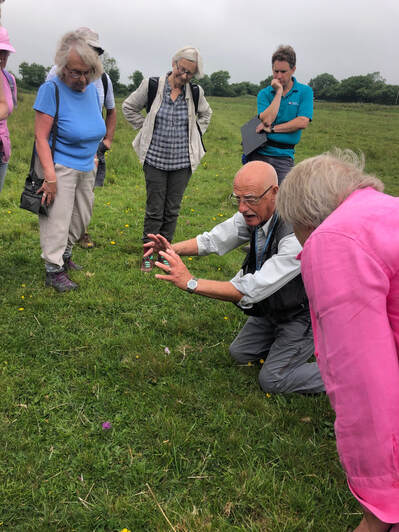 We had an enjoyable visit on Saturday to Kingcombe Meadows Nature Reserve, near Toller Porcorum. 27 people came along and were led by Dorset Wildlife Trust trustee Jim White. There was a moth trap opening event for National Moth Week, so we benefited from looking at the catch once we had finished the walk through the meadows. What a beautiful evening it turned out to be, fresh after the rain. Thank you to all who came along and joined us in celebrating the Society's 40th Anniversary on Saturday.
Peter and Inés set out a challenging 26 wildflower identification trail across the meadow and Andrew Graham's multiple choice mystery wildlife quiz had people marvelling at the stunning clues taken from photographs by our members. Prizes were awarded to young guests and slightly older members... What could be better than celebrating together in a pretty meadow in the late June sunshine? A reminder for this Saturday's field trip to the Dorset Wildlife Trust reserve at Kingcombe Meadows - please let us know if you’d like to join us. We’re aiming to get there for a guided tour starting at 09:45, so leaving Tisbury at 08:30 or thereabouts.
In your email, please tell us whether you will make your own way there, whether you could offer someone a lift (and if so, how many), or whether you would like (or be willing) to be a passenger in someone else’s car. The skies are clearing and we're keeping to plan with the party on the Field. Please see below for details.
We look forward to seeing you on Tisbury's Community Field at 6pm this Saturday. Parking is available at the Nadder Centre and you can walk down the track beside the swimming pool to reach us on the field.
There’ll be a Wildflower Treasure Hunt and a Wildlife Mystery Quiz to amuse both young and not-so-young, and for whole families working together. Come early and get stuck in; the grand prize giving will be at 7:00PM. We’ll provide a glass (or rather, paper cup) of wine &/or other drinks, and some nibbles, but please bring your own picnic or snacks (do avoid anything breakable, or glass) and something to sit on if you wish. At the moment the weather app is saying it's going to be a warm, sunny evening on Saturday. If it changes to a rainy forecast, we'll put a notice up on the blog about the change to an inside venue. Wiltshire is a stronghold of one of our less well-known butterflies – the Duke of Burgundy. It used to be known as the Duke of Burgundy Fritillary because its pretty orange and deep brown chequered markings resembled those of our other Fritillary butterflies. However, as it is actually from a different family – the metalmarks – the name has now been shortened to avoid confusion.
In the past, the Duke was primarily found in woodlands, where it fed on Primroses growing in dappled sunlight of coppice woodland. However, changes in forest management caused most woodland colonies to die out. It is largely restricted to the chalk and limestone areas of southern England, with scrub, gullies, or slopes to provide shelter, although isolated colonies are also found in the southern Lake District and North York Moors. It flies from late April into June and hereabouts colonies can be found along the northern side of the Shaston Ridge, parallel with but to the south of the A30. Here it favours the base of the slopes where the soil is deeper and moister. This, and less exposure to the sun prevents the leaves of the cowslips, on which its caterpillars feed, from drying out too quickly. The damage the caterpillars do to the leaves as they feed is very distinctive and can provide evidence of breeding even if no adults are seen. The Duke is often overlooked as it is a tiny butterfly and can be confused with skippers or small day-flying moths that may be found in the same habitat at the same time of year. They are fast-flying and rarely visit flowers. What sets the Duke apart, is the habit of the very territorial males spending much of their time on prominent perches on the edge of bushes or atop grass tussocks. From there they keep a look out for passing females which are pursued ardently. The male will also sally out aggressively to inspect any approaching insect, and if it is another male, they often do battle, spiralling rapidly upwards in a dogfight. The victor returns to their perch. If you disturb one, the males will often return to the same perch or very nearby, so you just have to be patient and wait for it to come back. These locations, sometimes called leks, seem to be favoured every year by newly emerged butterflies which identify the same locations to defend against all-comers. The females are less conspicuous, flying low over the ground, looking for suitable plants on which to lay their eggs. These flights may take them away from where they emerged, helping to establish new colonies if the right habitat can be found. An unusual feature of the Duke is that it exhibits sexual dimorphism, in that the male and the female are distinctly different. As we know, most insects have six fully functioning legs, but the male Duke only has four. by Andrew Graham |
Photo: Avocets (Izzy Fry)
The headers display photos taken by our members. Do get in touch via the Contact Form if you'd like to submit a photo for selection.
Archives
May 2024
Categories
All
|
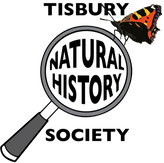
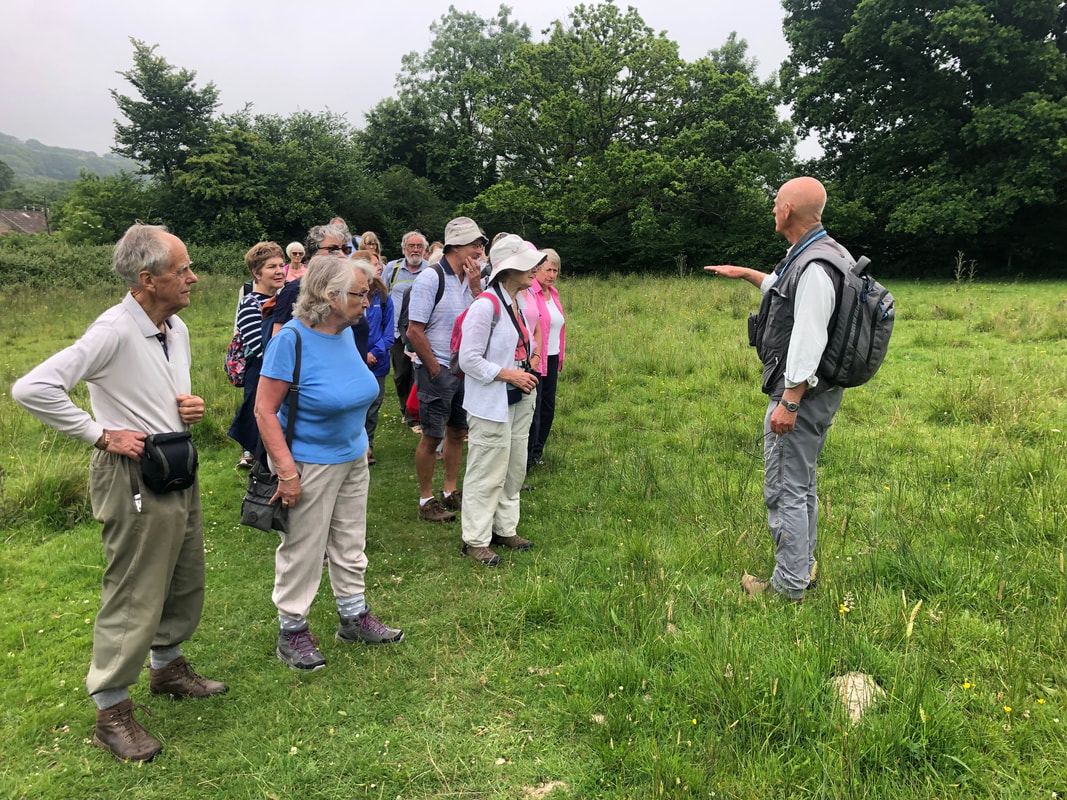
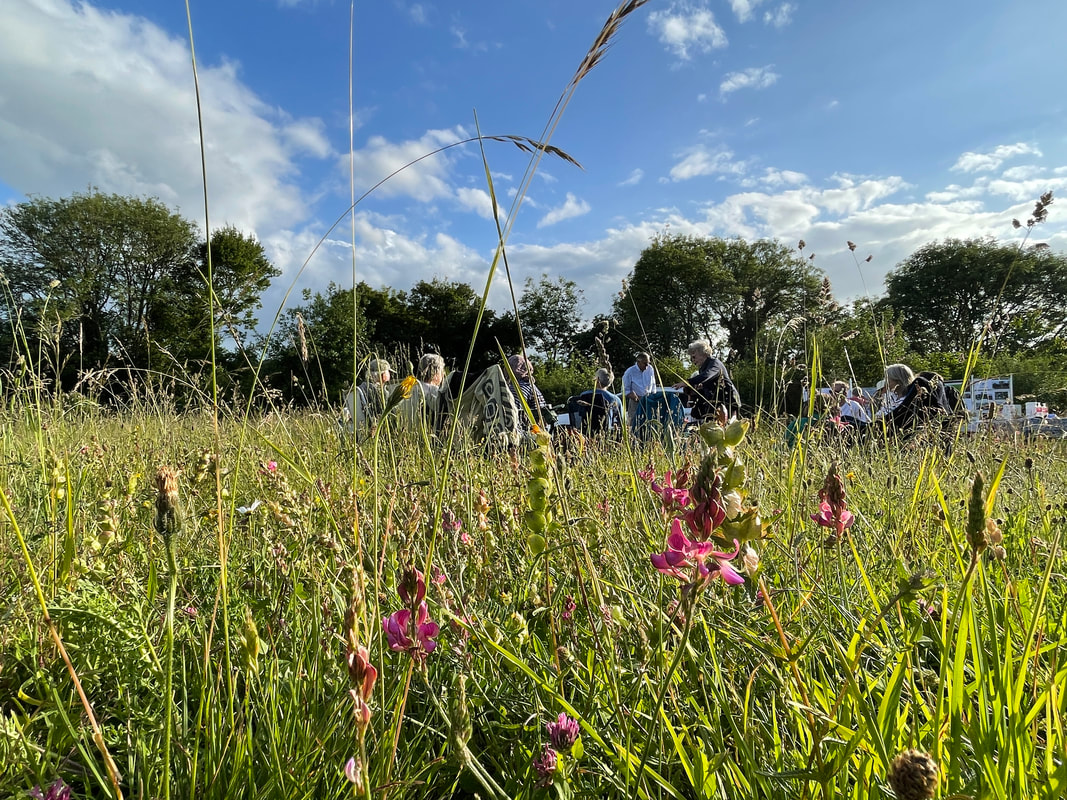
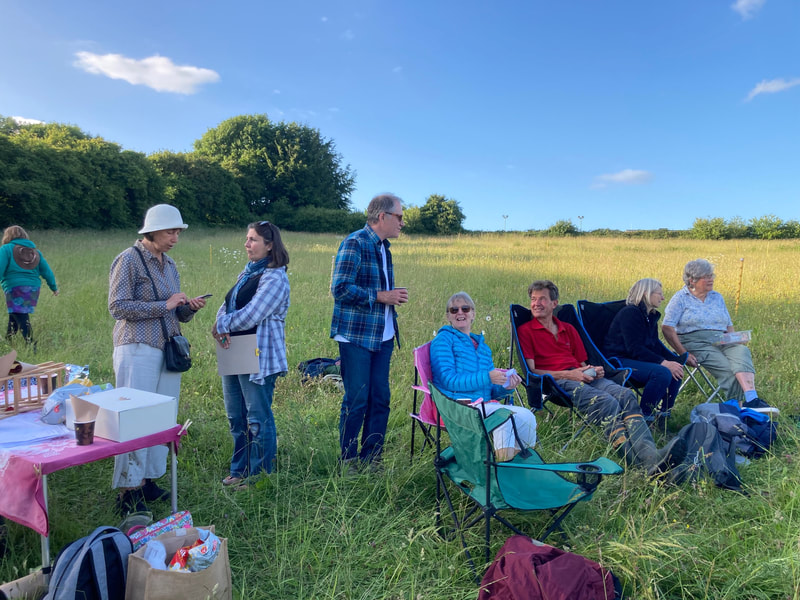
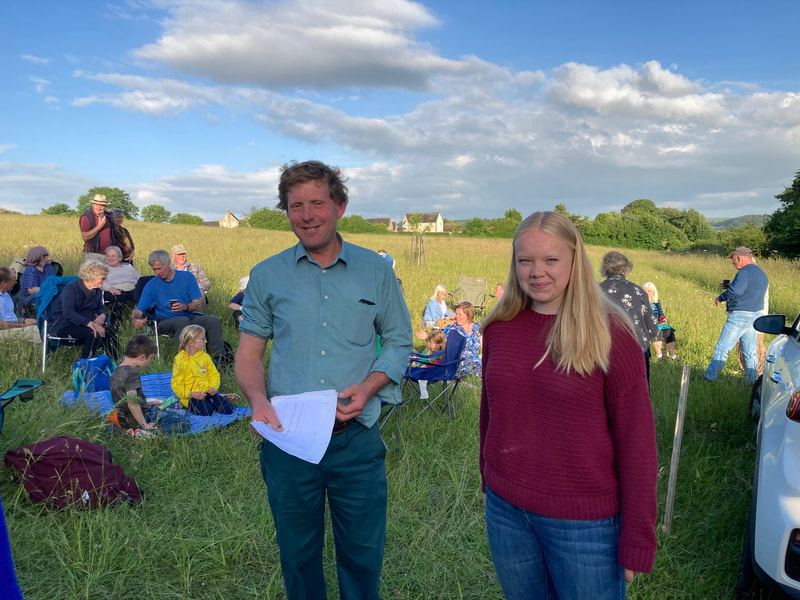
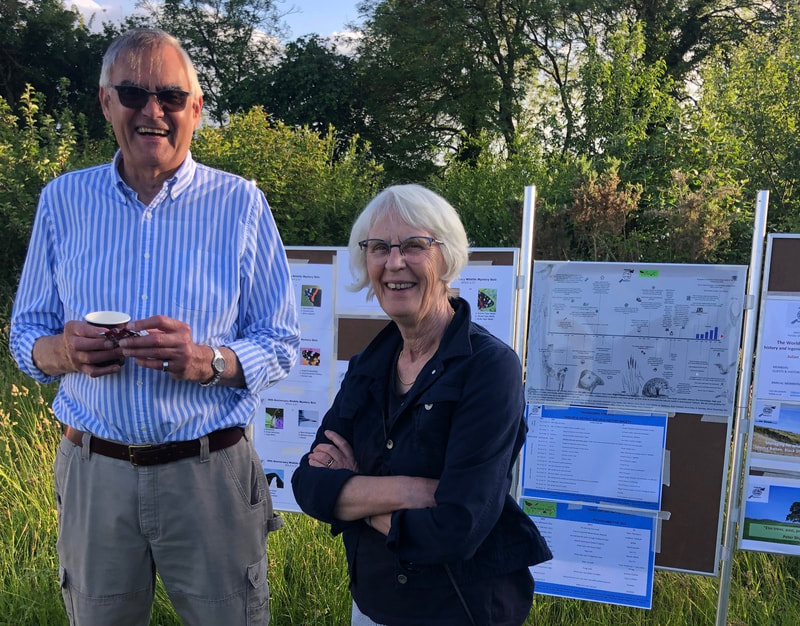
 RSS Feed
RSS Feed